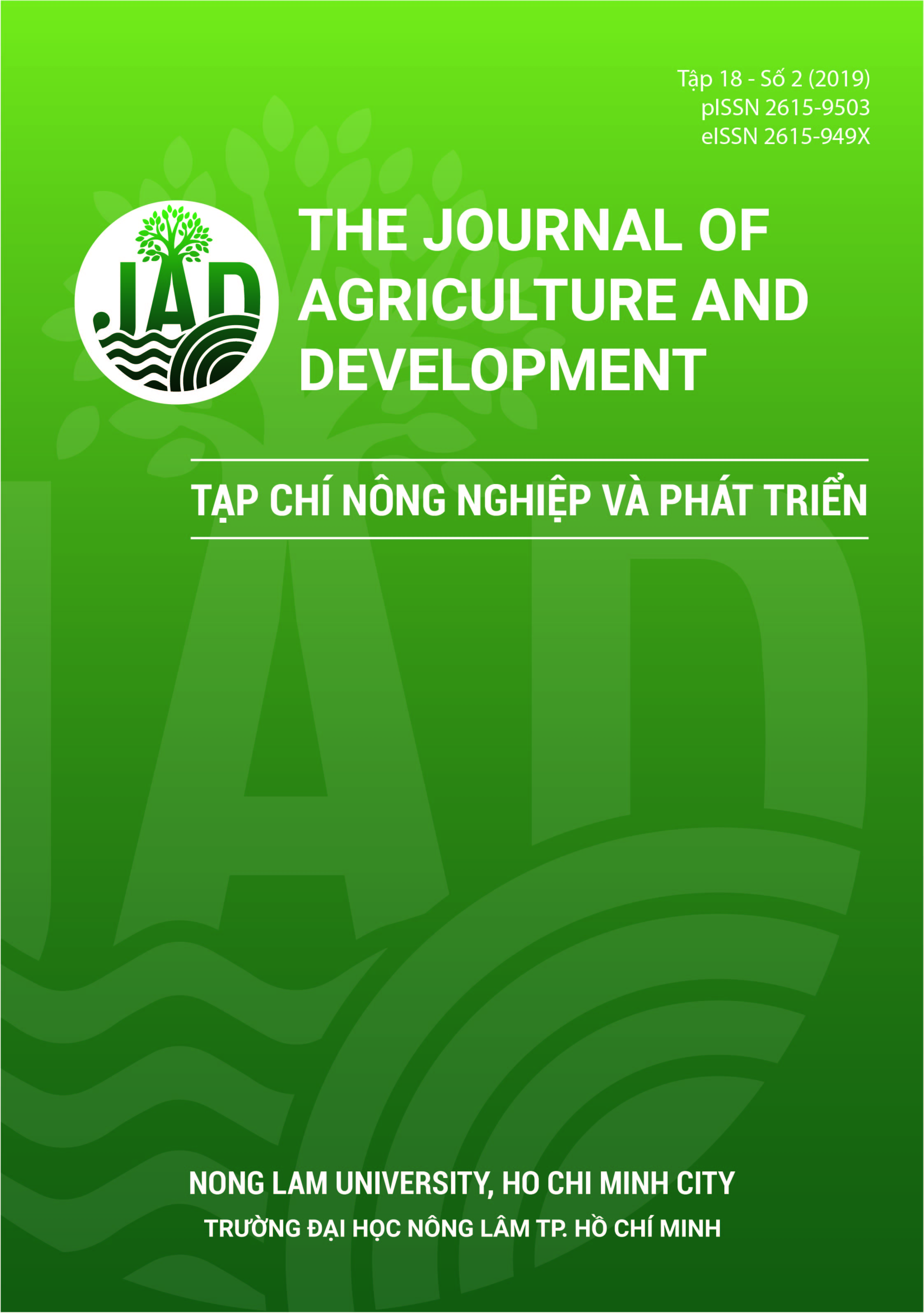Factors influencing the change in purpose of land use of households at Lac Duong district, Lam Dong province
Main Article Content
Abstract
The article aimed to investigate the effects of socio-economic and demographic characteristics of the households, the land area, and the occupation of household members in Lac Duong district, Lam Dong province, on the change in purpose of lan duse. The data for this analysis were collected in 2016 by surveying of 340 farm households in two administrative divisions (Dasar commune and Lac Duong town, Lac Duong district). The paper used the Probit regression method to measure the impact of independent variables on the probability of farm households changing land use purposes. The results showed that other production potentials on the land were maintained despite the limited use of land and income, which directly affected the decision to change the land use of farmers. The status of Lac Duong district affected the purpose of land use. The current context of the district suggested that this districtis in still a rural area, not strongly affected by urbanization, although the location is very close to Da Lat city and this district has large area of farmland. It is not necessary to change the land use purpose. Farmers can use advanced production methods such as hi-tech agriculture, urban agriculture, and agrotourism. The further confirmation of results presented here from future studies is necessary.
Article Details
References
PCLD (People’s Committee of Lac Duong District). (2016). A report of social-economic results at Lac Duong in 2015. Lam Dong, Vietnam: PCLD Office.
Rahman, S. (2016). Impacts of climate change, agroecology and socio-economic factors on agricultural land use diversity in Bangladesh (1948-2008). Land Use Policy 50, 169-178. https://doi.org/10.1016/j.landusepol.2015.09.010
Saunders, M., Lewis, P., & Thornhill, A. (2008). Research Methods for Business Students (5th ed.). Essex, England: Pearson Education.
Veldkamp, A., & Fresco, L. O. (1996). CLUE: a conceptual model to study the conversion of land use and its effects. Ecological Modelling 85(2-3), 253-270. https://doi.org/10.1016/0304-3800(94)00151-0
Verburg, P. H., van Eck, J. R. R., de Nijs, T. C. M., Dijst, M. J., & Schot, P. (2004). Determinants of landuse change patterns in the Netherlands. Environment and Planning B: Planning and Design 31(1), 125-150. https://doi.org/10.1068/b307
Woolridge, M. J. (2017). Introductory Econometrics (5th ed.). Ohio, USA: South-Western.
Xie, Y., Mei, Y., Guangjin, T., & Xuerong, X. (2005). Socio-economic driving forces of arable land conversion: A case study of Wuxian City, China. Global Environmental Change 15(3), 238-252. https://doi.org/10.1016/j.gloenvcha.2005.03.002








